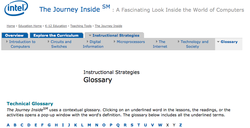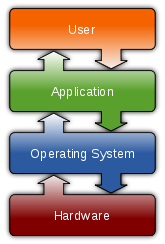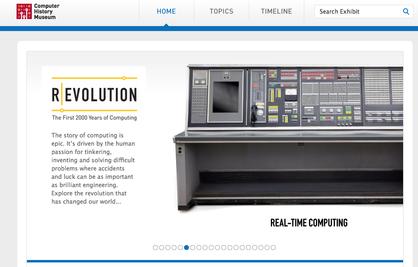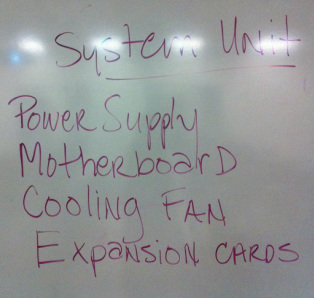Looking for a Career? Example of job in 2016
EdTech Digital Photography and Graphic Design Instructor
EdTech Digital Photography and Graphic Design Instructor (5th-9th)
San Francisco, CA, USA •
REF71V
Company Description Do you love
working with kids?
Are you an expert teacher and facilitator?
Are you a digital photography and graphic design wiz?
Do you love to share your passion for photography and design?
Do you enjoy leading design projects?
Are you a fan of summer camp fabulousness?
Are you fun and creative?
Are you looking for an opportunity to grow?
Do you want to be part of a great team?
Do you want to make an impact on children’s lives this summer?
Camp EdTech is looking for energetic, creative, and fun digital photographer and Graphic Design Instructors to lead our inspiring skill building curriculum. Photography and Graphic Design Instructors are photo/media design students and professionals with experience in youth facilitation and expertise in digital photography and graphic design.
Job Description Spring: Curriculum Training- (Select weekends in June)
Summer: Full Time- (6-7 weeks June-August)
Hours: 7:45am-4:00pm: Monday-Friday
Are you an expert teacher and facilitator?
Are you a digital photography and graphic design wiz?
Do you love to share your passion for photography and design?
Do you enjoy leading design projects?
Are you a fan of summer camp fabulousness?
Are you fun and creative?
Are you looking for an opportunity to grow?
Do you want to be part of a great team?
Do you want to make an impact on children’s lives this summer?
Camp EdTech is looking for energetic, creative, and fun digital photographer and Graphic Design Instructors to lead our inspiring skill building curriculum. Photography and Graphic Design Instructors are photo/media design students and professionals with experience in youth facilitation and expertise in digital photography and graphic design.
Job Description Spring: Curriculum Training- (Select weekends in June)
Summer: Full Time- (6-7 weeks June-August)
- Approach education with passion and excitement
- Manage project groups throughout the photography and design process
- Create a positive vibe within your EdTech camper
- Work collaboratively with partner EdTech Instructor
- Responsible for campers producing projects through out the week
- Manage Counselors and CIT’s while in the classroom
- Work closely with the Camp Director, Counselors and other Instructors to create fun camp games, arts and crafts songs, skits and special activities/events
- Assists with camper check-in and check-out
- Interact with parents in a professional and energetic manner
- Give positive reinforcement to campers
- Help cultivate confidence and self esteem, as well as natural love for learning
- Set-up, organize and manage classroom
- Insure equipment security
- Assist Camp Director with camp IT and media
- Refine curriculum and add personal contributions
- Be both Instructor and ‘buddy’ to campers – Instructors eat lunch with campers, perform skits and build positive “role model” relationship with kids
- Instill the EdTech Vibe of kindness, respect, honesty and FUN in all campers
- BFA/current student of photography/and or media arts
- Experience facilitating groups of kids
- Experience working with K-5th graders
- Proven project management skills
- Familiar with Photoshop Elements, Apple or PC computers and digital cameras.
- Experience teaching kids in the respective mediums a HUGE plus.
- Customer service skills
- Experience interfacing and talking with parents/public
- Camp background (Preferred)
- Contagious enthusiasm and charisma
- Team player
- Creative, fun and bright
- A youth programs rock star!
Hours: 7:45am-4:00pm: Monday-Friday
Adding video and gif animations . . .
CSS43 Class by the Week
Wired and Wireless Communications
Chapter 7 Notes
Computer networks link two or more computers so they can exchange data and share resources. Networks enable communications (electronically sending and receiving data) through the establishment of communications channels. To connect to a network, you need to have a network interface card (NIC) and an operating system that supports networks. A local area network (LAN) is within a small geographic area, such as a building or a group of buildings. LANs are typically owned and managed by a single person or organization. A wide area network (WAN) is a geographically dispersed collection of LANs that links computers separated by a few miles or even thousands of miles. Unlike a LAN, a WAN is not owned by a single organization. Instead, it has a collective ownership or management, such as the Internet. The Internet is the largest WAN. A metropolitan area network (MAN) is a network designed for a city or town. It is usually larger than a LAN but smaller than a WAN. Typically, a MAN is owned by a single government or organization. A campus area network (CAN) includes several LANs that are housed in various locations on a college or business campus. It is usually smaller than a WAN. A personal area network (PAN) is a network created among an individual’s own personal devices, usually within a range of 32 feet. Such networks involve wireless technology. A home area network (HAN) is a personal and specific use of network technology that provides connectivity between users and devices located in or near one residence. It enables users who reside at that location to quickly and conveniently share files and resources by using network connections between computers and peripheral devices. |
Lab- Spreadsheets Overview and Charts
Spreadsheets
|
Internet and the World Wide Web
Tim Berners-Lee: The next Web of Open . . .
|
Lab and Lecture Research Paper
Advanced document formatting-Continue to refine research document to being adding to your document. Identify research and data for use in spreadsheet lesson.
Insert footnotes to cite sources. Add content into heading areas. Last half hour of class today we will review some of the concepts brought up during our lecture on the Internet and World Wide Web. Practice using Twitter, comments on blogs, social media, RSS feeds, sites of interest were Travelocity to sign up for fare alerts and Travelzoo that has a subscriber list that goes out by email weekly. Here is some inspiration for today! |
Week 5-Lecture Application Software: Tools for Productivity
Making work and creative projects more effective.
Microsoft Office productivity suite; Word, Excel, Powerpoint and Access are some tools used for office efficiency. Mac has the iWork suite that has Pages, Numbers and Keynote. Mac also has a great mulitmedia digital tools application software iMovie, iPhoto and GarageBand. Open Source Application software includes Gimp and OpenOffice these are free programs with code that is updated by a community. Adobe products offer the industry standard tools for web and print publication tools; Photoshop, Illustrator, InDesign, Dreamweaver and Flash. Google Document is a cloud based solution for your virtual office, anywhere, anytime editing and sharing. |
Week 5- Lab and Workshop
The poetry reflection is your outcome for this lab and workshop. You posted your poem and photo composite to your blog . . . Great work! Here is another tutorial if you are so inspired!
|
Week 4-Lecture System Software
System software is a catch-all term for the programs that handle the running of your computer's hardware. The two main categories are:
Operating systems(OS) is a set of programs that manage computer hardware resources and provide common services for application software. The operating system is a vital component of the system software in a computer system. Application programs require an operating system which are usually separate programs, but can be combined in simple systems. Utility software is system software designed to help analyze, configure, optimize or maintain a computer. A single piece of utility software is usually called a utility or tool. |
Week 4 Lab and Workshop
Check the Calendar for class updates! Wed. we are taking a short field trip to the Student Center! :)
Information Literacy . . . http://www.hartnell.edu/library/ Internet Ethics
|
Week 3-Lecture Input and Output

Getting to know the inside of the computer and how it works. One essential tool is to have a good grasp of the language. Study your vocabulary it will support your technology journey. Please post a new vocabulary word you have learned in the first two weeks of interest and why? Here is a link to a good glossary of terms. . . http://educate.intel.com/en/TheJourneyInside/InstructionalStrategies/IS_Glossary/
|
Week 3-Ethics Lab
|
Week 2
|
Week 2
|
Week 1
|
|





